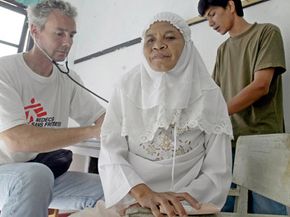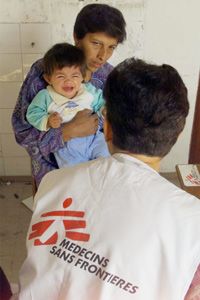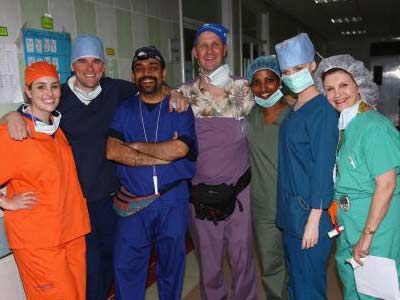Becoming a doctor is no easy task. Someone with the initials M.D. behind his or her name has endured college courses designed to weed out the weaklings, spent months studying for the MCAT, survived several years of medical school and completed rigorous internships and residencies. After such years of struggle, it's understandable that some doctors open plush offices and enjoy the benefits of what can be a financially lucrative career. Other doctors may work in notably less luxurious conditions for their entire lives, but only a small few sign up to work in the harshest conditions of all, like war zones and disaster sites.
Médecins Sans Frontières (MSF, or Doctors Without Borders, as it's known in North America) provides doctors the opportunity to do just that. MSF is an international medical humanitarian organization that provides aid in approximately 60 countries, including Sudan, Somalia and Palestinian territories. The organization's name is slightly misleading, as it's not just doctors in the field, but a vast array of medical professionals such as nurses, midwives, epidemiologists and laboratory technicians. Non-medical professionals, including logistics experts and sanitation specialists, are also essential to the organization's work.
Advertisement
MSF's work has put them in the midst of armed conflict, epidemics and natural disasters, but the organization can also be found in developing countries that don't garner headlines, places where children are severely malnourished and large segments of the population are denied any form of health care. MSF works independently and impartially, meaning that it doesn't kowtow to any governmental regime or discriminate in providing aid. At times, though, MSF has spoken out against injustices its workers have seen, particularly when governing parties have restricted access to victims of conflicts and catastrophes. For its efforts, MSF was awarded the Nobel Peace Prize in 1999.
That ability to bear witness to crimes against humanity was one of the driving forces in MSF's creation. Today, 19 offices worldwide work under the MSF logo, but on the next page, we'll travel back to the 1970s and MSF's modest beginnings.
Advertisement




